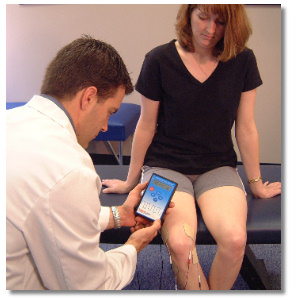

Most basically, Electrotherapy is the application of electric current to the body to reduce pain or speed healing. The term encompasses many types of therapies including TENS (Transcutaneous Electrical Nerve Stimulation), NMS (Neuromuscular Stimulation), IF (Interferential Stimulation) and HVG (High Voltage Galvanic). IF and HVG stand out from this bowl of alphabet soup as having the widest range of application.
More than 40 years ago, physicians began using low frequency, low voltage signals on patients with chronic or severe pain. This type of therapy, known as TENS, is inexpensive and brings pain relief to many people.
However, the low frequencies which are the most therapeutic are also those best absorbed by the skin and shallow tissue. Thus, patients have to apply fairly large voltages for the signals to penetrate to deep tissue. The discomfort associated with larger voltage limits the effectiveness of basic TENS therapy for deep tissue injuries.
The Austrian physician Dr. Hans Nemec pioneered what is known as "Interferential Stimulation". With IF, two signals of slightly different, high frequencies are applied to the body. The two signals "interfere" with each other resulting in a low frequency signal that penetrates to deep tissue and covers a wider area than can be reached with a single signal.
Furthermore, advances in electronics and miniaturization mean that inexpensive, simple-to-use, portable devices like TheraLabs TL1000 can be used by the patient in their own home frequently and easily.
Recent clinical studies have shown that at-home application of interferential stimulation can reduce recovery time after surgery by 50-70% as well as decreasing swelling and pain.